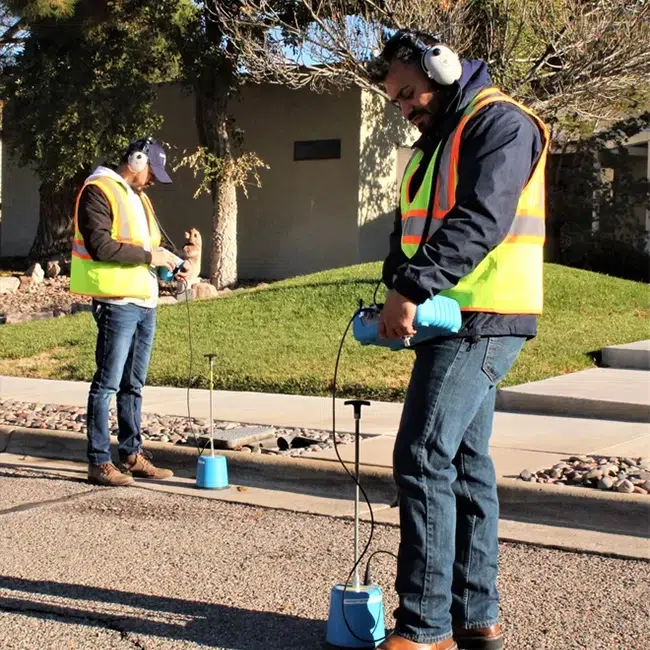Top Water Leak Detection Techniques to Secure Your Property from Water Damage
Top Water Leak Detection Techniques to Secure Your Property from Water Damage
Blog Article
Innovative Solutions for Very Early Discovery of Water Leakages in Buildings and Facilities
From sophisticated leakage detection modern technologies to the release of IoT sensing units for real-time monitoring, the landscape of leak prevention is progressing quickly. Automated water flow evaluation systems are improving just how leakages are determined and attended to, leading the method for a proactive technique to water leak discovery.
Advanced Leakage Detection Technologies
Advanced leakage detection technologies, geared up with cutting-edge sensors and formulas, play a critical function in swiftly recognizing and identifying water leakages in various setups. These modern technologies employ a mix of acoustic, thermal, and electromagnetic sensing techniques to discover leaks properly. Acoustic sensing units find the noise of escaping water, permitting for exact localization of the leak resource. Thermal imaging identifies temperature level changes created by water leakage, giving one more efficient technique for leakage recognition. Electro-magnetic sensors can identify adjustments in electro-magnetic fields created by water, supplying yet an additional layer of leak discovery capability.

IoT Sensors for Real-Time Surveillance
In the world of modern-day water leakage discovery, the combination of IoT sensors for real-time tracking stands for an essential development in enhancing positive leakage detection abilities. These sensing units use continual tracking of water systems, offering real-time information on water circulation prices, pressure variations, and temperature level adjustments. By leveraging IoT modern technology, these sensors can spot even the smallest abnormalities in water usage patterns, making it possible for early recognition of prospective leakages prior to they rise into significant concerns.
IoT sensing units transmit information to a central platform, where advanced formulas analyze the details and produce alerts or notices when irregularities are detected. This real-time monitoring ability allows home owners or center managers to promptly deal with leakages, decreasing water damages, decreasing fixing prices, and conserving water sources.
In addition, IoT sensing units can be integrated with structure management systems, permitting for computerized reactions to found leakages, such as shutting down water valves or activating pumps to alleviate the effect of leakages. In general, the application of IoT sensors for real-time monitoring significantly enhances the effectiveness and performance of water leak detection in buildings and infrastructure.
Artificial Intelligence Algorithms for Leak Forecast

One trick benefit of making use of device discovering for leakage prediction is its ability to continuously learn and boost its precision in time. As even more data is accumulated and fed right into the formula, it can fine-tune its predictions and adapt to changing problems, inevitably boosting the dependability of leak discovery systems.
Additionally, artificial intelligence formulas can aid in identifying refined indications of leaks that might go unnoticed by conventional surveillance techniques. water leak detection. By examining intricate data sets in real-time, these formulas can offer early warnings and informs, allowing for punctual treatment and precautionary maintenance to mitigate possible water damages and associated expenses
Utilizing Thermal Imaging for Leak Detection
Thermal imaging modern technology provides a promising strategy for detecting water leakages in various systems and infrastructures. By using infrared radiation and temperature differences, thermal imaging cams can determine concealed leaks that are not conveniently noticeable to the naked eye.
One of the vital benefits of thermal imaging for leakage discovery is its non-intrusive nature. Generally, the usage of thermal imaging technology boosts the performance and accuracy of water leak detection, making it a useful tool for preserving the stability of structures and infrastructures.
Automated Water Flow Evaluation Systems
Exactly how can automated water flow analysis systems revolutionize the discovery and monitoring of leaks in numerous systems and facilities? Automated internet water flow evaluation systems use a proactive strategy to leak detection by constantly keeping an eye on water flow rates and patterns. By developing standard data, these systems can swiftly recognize deviations that might suggest a leakage, allowing punctual treatment to prevent substantial damages.
These systems use advanced formulas to analyze real-time data and provide prompt alerts when abnormalities are found, permitting swift activity to be taken. In addition, computerized water circulation evaluation systems can be integrated with building administration systems or IoT systems, improving general effectiveness and allowing remote monitoring abilities.
Additionally, the information accumulated by these systems can be utilized for predictive maintenance objectives, aiding to recognize prospective weak points in the framework prior to leaks happen. Generally, the execution click site of automated water flow evaluation systems can substantially boost leak detection and monitoring practices, inevitably causing cost financial savings, reduced water wastage, and boosted sustainability in structures and facilities.

Final Thought
To conclude, the assimilation of sophisticated leakage discovery technologies, IoT sensing units, artificial intelligence formulas, thermal imaging, and automated water circulation evaluation systems supplies ingenious solutions for early discovery of water leakages in buildings and facilities. These technologies allow real-time surveillance, prediction of leakages, and efficient detection approaches to avoid water damages and wastefulness. Applying these remedies can help in maintaining the stability and sustainability of water supply in various settings.
Report this page